Shooting digital medium format in wedding photography
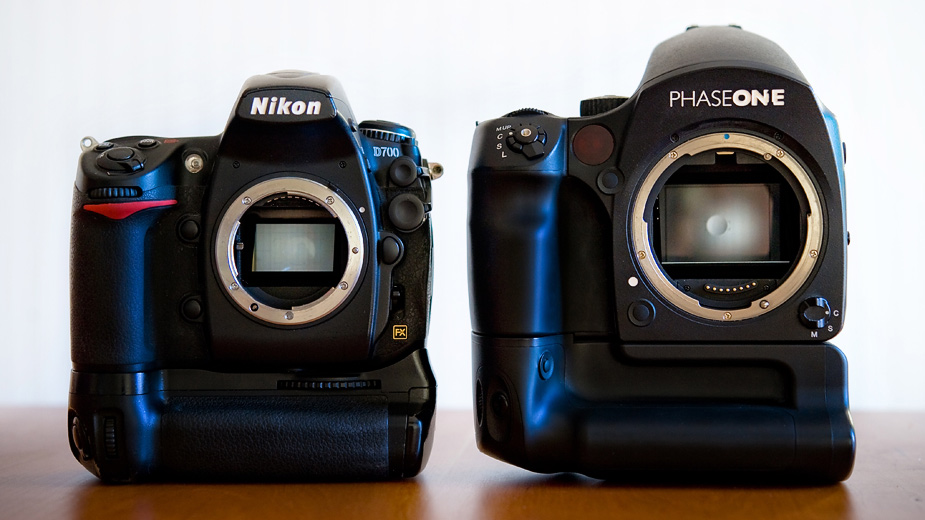
Gear once stood as a distinguishing factor between a pro and an amateur. For example, if you wanted your carpets cleaned right the first time, you would hire a pro. If you chose to do it yourself with a grocery-store rental and save money, my wife would notice the difference. Quickly.
Cost shouldn’t be the barrier between choosing creative tools to do the job right, especially among professionals that appreciate the investment for the client benefit. Compare today’s $6,000 Nikon D4 to refurbished $6,000 PhaseOne backs are like comparing apples and oranges. Both are fruit, yes. But they boast an entirely different look, taste, and feel.
In an industry surrounded in sameness, being different remains an uphill hike I’m proud to endure.
Introduction
Choosing the best crayon in the box sounds easy. And while there’s a rarely a wrong choice, sometimes one color is more equal to another. There’s a difference between Granny Smith Apple and Green. Apart, viewers might not be able to discern subtle differences next to a thousand other colors. Pair a dozen Green Crayolas together, differences contrast.
Similar differences when painting with acrylic versus oil. Not to say one is better than the other. However, it is important to appreciate the differences: tradition, budget, process, and artistic appeal. And it is nothing to laugh at.
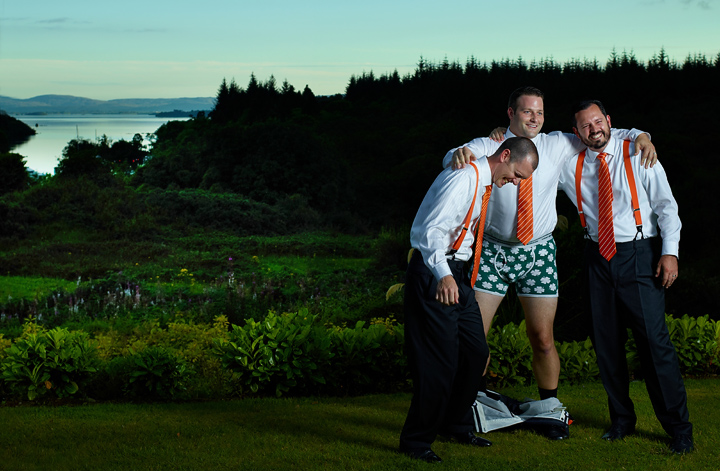
Crayons, paint, and cameras aren’t much different. All are creative tools. Nuances appreciated by the artist might not be viewable by the client. Herein lies the selfish difference : the artist knows. And knows well the tools required to create the best quality possible.
My chosen medium
Shooting a destination wedding using a medium format digital rig represents a significant departure from the norm. In the crayon world, it’s like going from a box of 24 colors to one with a new box with 120 colors. While the camera is only part of the creative equation, creative post-processing for me is part of the art. I appreciate the differences, especially with 16-bit color depth and a rich dynamic range. Shocking, I know. As if a bride and groom stumbled upon a leprechaun at their wedding in Ireland:
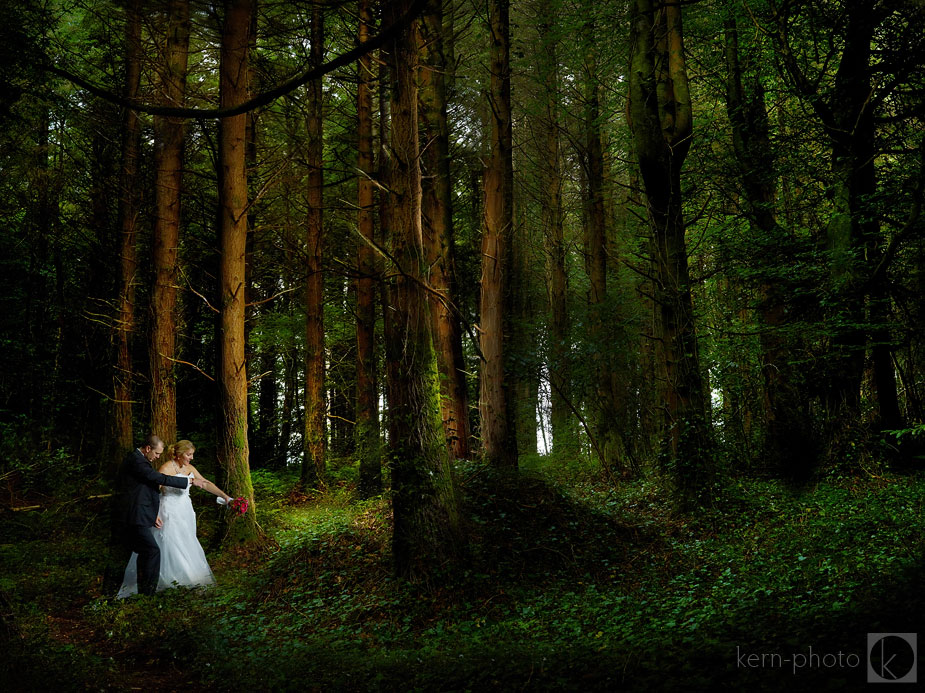
Emotions and schedules change as quickly as the weather, which often leads wedding photographers to shoot exclusively with a 35mm DSLR system like Canon or Nikon. A visual conflict arises to the discerning bride, who might want a certain allure and look she’s seen in the fashion magazines, but doesn’t see in the final set of wedding images. When the lines between image quality of the pros and wedding guests blur, the working professional takes note. Therein lies the question: does choosing the right camera for the right job matter?
I argue it does, especially in post-processing. There’s just more data to play with.
While it’s nice to have different tools at the same time, it’s always important as a photographer to maintain a preference for a certain look in a given situation. So often I rely on intuition on which camera to pick up. As so often, especially when an off-camera flash is being used, I grab my PhaseOne IQ with confidence knowing that I’ve picked the right crayon, especially when shooting family photos at Burning Man:
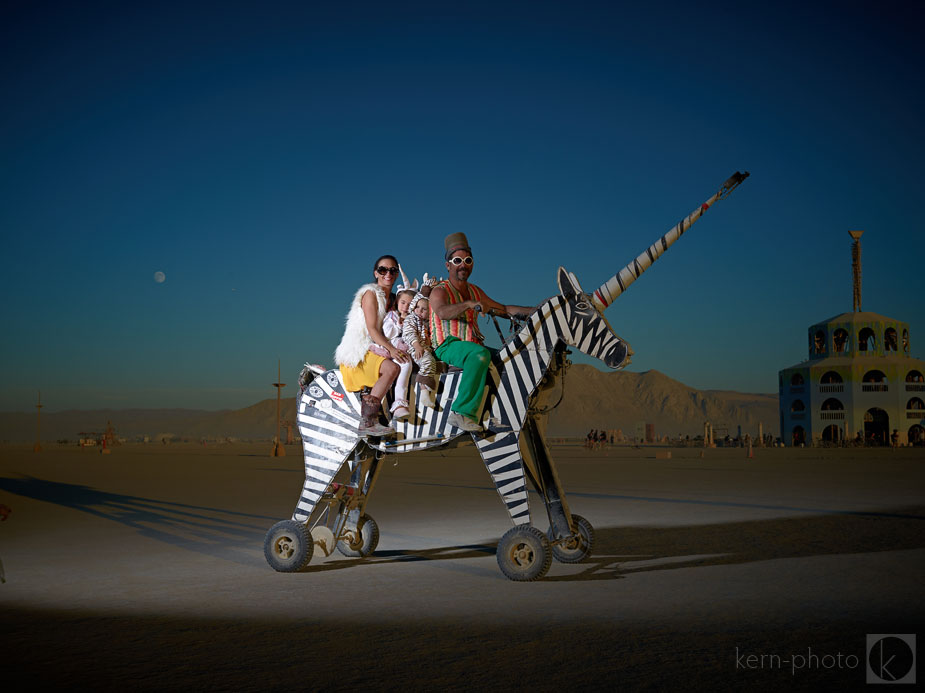
Which is why I share some of my thoughts in choosing my PhaseOne IQ medium format system ::
11 technical advantages of Digital Medium Format vs DSLR
#1. Savor the Look.
Image quality trumps all. Early on in my photography career I was impressed by the image quality of images hanging in galleries taken with larger format cameras, especially film portraits by Annie Liebovitz and Mark Seliger. The aesthetic allure drew me right in, especially with tonality, detail, and sharpness. I had an understanding that the camera didn’t make good photography, but it certainly helps. Fast forward about a decade. I knew it was where I was headed, but I needed the time to build my business to the point where I could make the investment in the right gear. It took 10 years to get to this point, and after shooting all my weddings last year with MF digital, I am confident in my decision with my PhaseOne. There’s a roundness that adds depth and punch to the image I love!
#2. Use 1/1600 Flash Sync.
My search for a new camera system came to an end once I began shooting flash at 1/1600 sec, thanks to the PhaseOne 645DF with a leaf shutter and IQ digital back. So much of my creative work and shooting style over the years has relied on off-camera lighting. I knew this was the direction I wanted to take things. I’m a strobist at heart, always ready to MacGyver a lighting setup with small flashes. Which is why leaf shutters matter. When compared to the 1/250 flash sync of the Nikons, now I can use my leaf shutter lenses to full capacity, which I love. They become super power when used at speeds of 1/1600, which is four-times as powerful. Why use a Profoto D1000 for a main light when a 250 will do fine? The faster sync speeds help to cut down ambient by two stops and I can shoot at f/4 all day if I want. That results in faster flash duration and quicker recycle time, which means I can squeeze more juice out of my strobes when used with my leaf shutter lenses out in remote locations. I can leave big power packs at home
#3. Thinking Long-term with an Open-source System. I like modular systems where I have the power to pick and choose what I want to work with. Lenses, bodies, and backs. This gives me greater flexibility over the next 10 years as my shooting style evolves. Heck, if in 10 years I want to shooting landscapes all over the world, I can still use my back on a technical camera. Can’t say that about other big-name DSLRs. Here, my friend Tim Boatman uses an Arca-Swiss Rm3D technical camera mounted with PhaseOne 140 back.
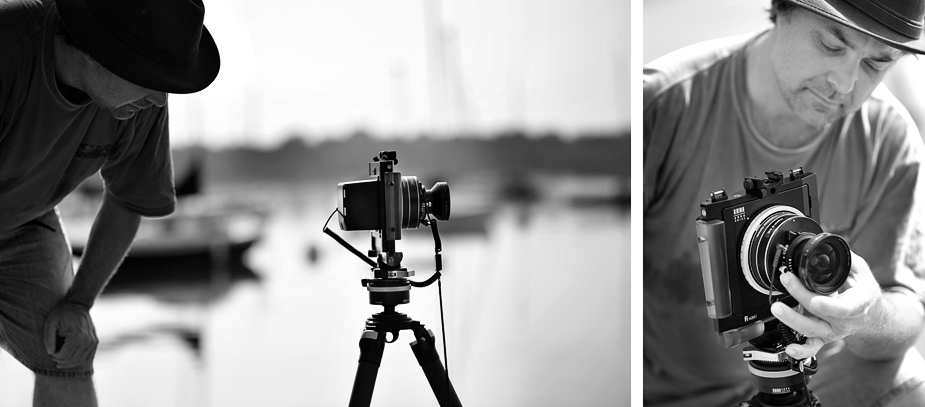
#4. Edit with 16 bit Depth per Color Channel.
This is a whole new, bigger box of crayons. You can really dig deep into those rich files, push them however you wish, and maintain the image quality and stunning, realistic color. Nailing a shot in camera makes a shot, but the other 50% in post makes the image. Editing these images on my dual 27” displays with a cup of coffee or glass of wine and my music is such a fun experience!!! If I have to sit in front of the computer, I might as well enjoy my experience while playing with my images and digging into the dynamic range. And the ability to recover shadow detail along with preserving highlight details within the same image.
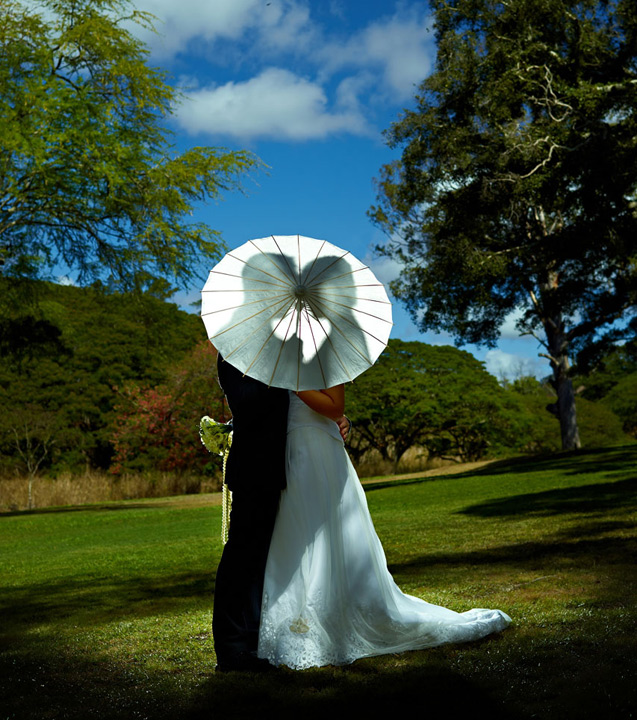
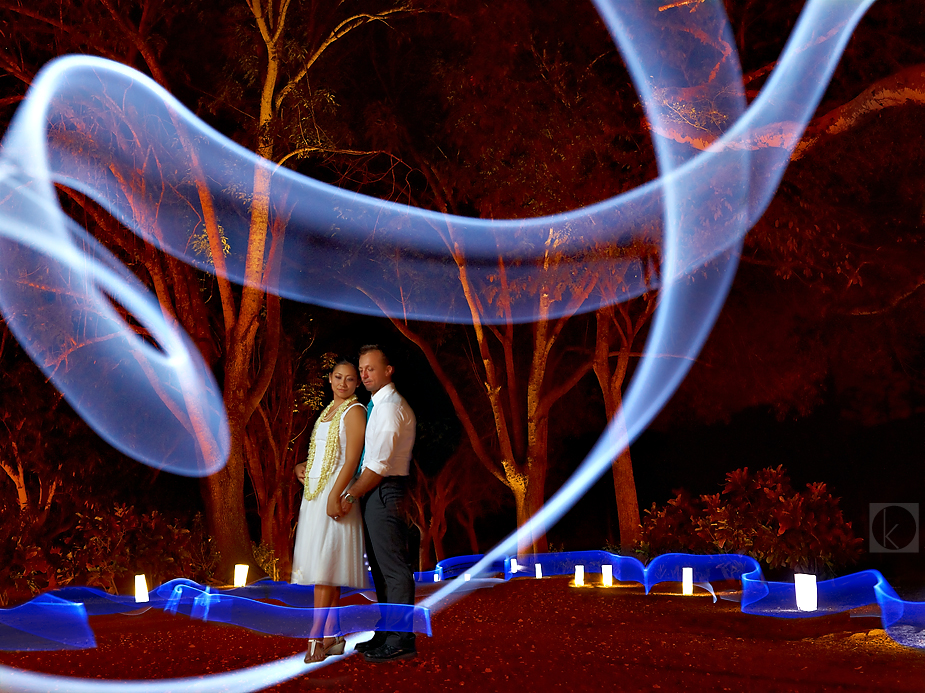
Speaking of dynamic range, shooting a white dog on white seamless is no easy task with a DSLR and one strobe. Yet, the PhaseOne has no issue retaining both highlight and shadow detail that would stand up to a 40” enlargement. I shot at 1/1600 sec in my garage and could keep the ambient light at bay using only my strobe for the light.
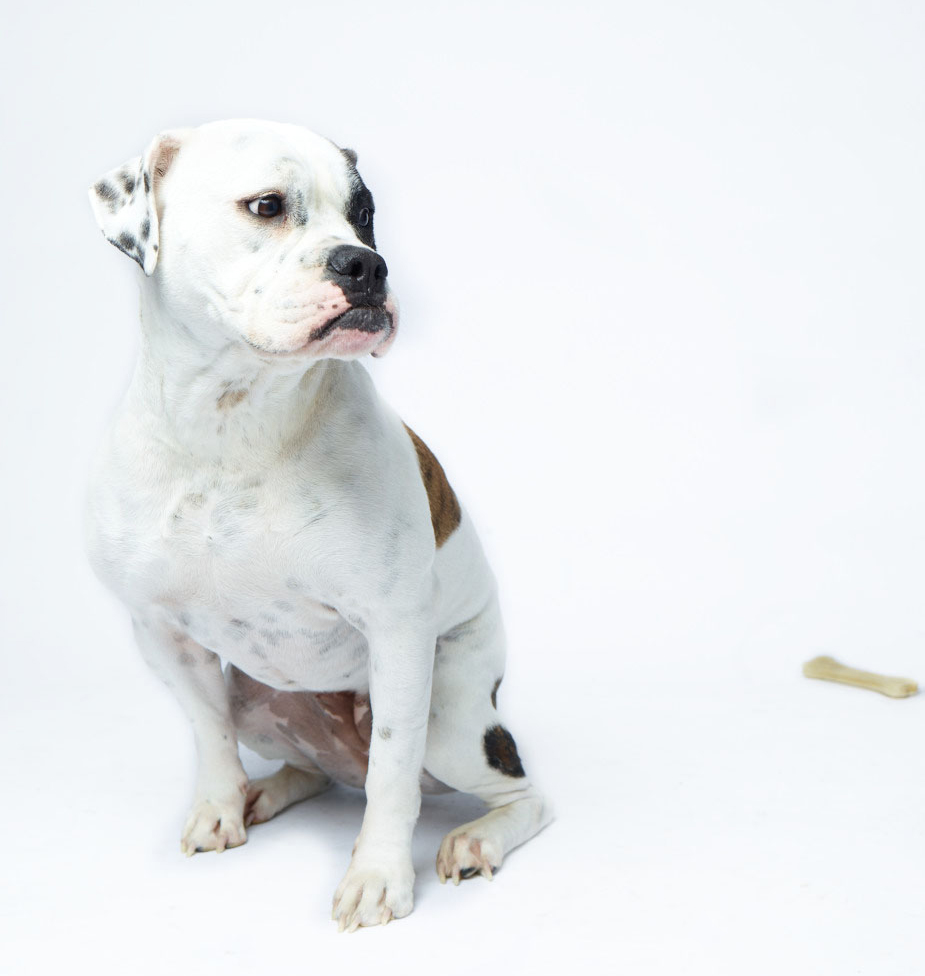
PhaseOne 645 DF / Schneider Kreuznach 55mm f/2.8 LS @ f/8 and 1/1600 sec / ISO 50
#5. Relish the Shooting Experience.
Staying true to tradition, I love the large viewfinder and the clunk of the shutter of the PhaseOne. I am 34, but find myself returning to a tradition of loud cameras that are easy to see through. So much of what draws me into the photography experience is about seeing and hearing, which makes sights and sounds from my PhaseOne an attractive alternative to a DSLR. There’s no mistake when you take that picture, especially with a medium format leaf shutter. Not just a plastic-y ”click.” A confident shutter “ whomphf” offers client feedback that what they are doing is correct and worthy of a photograph. During wedding formals, parents like affirmation that those fleeting and important moments are documented, which makes them feel extra important.
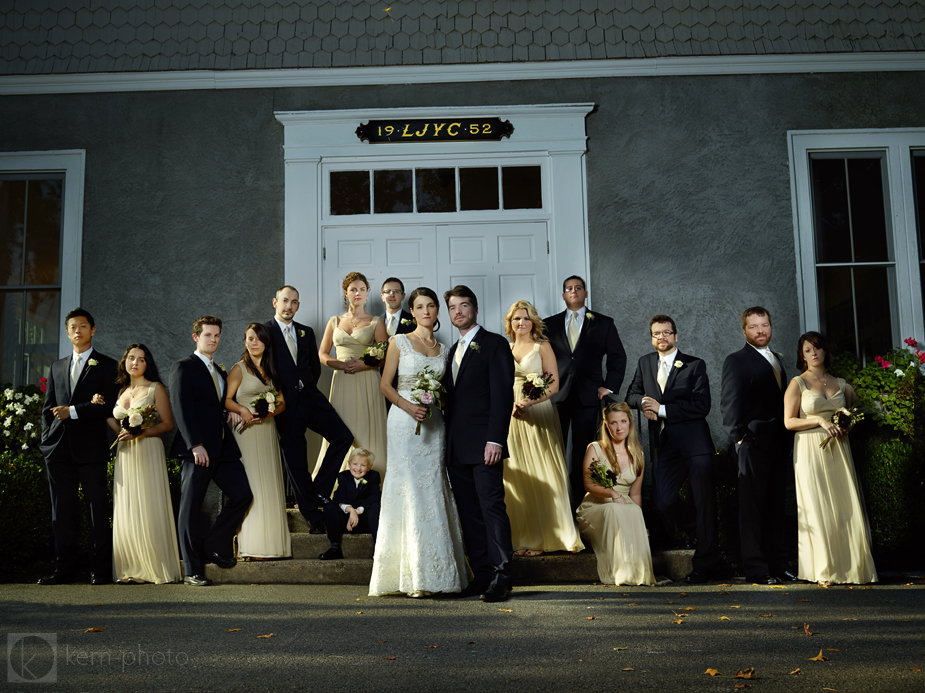
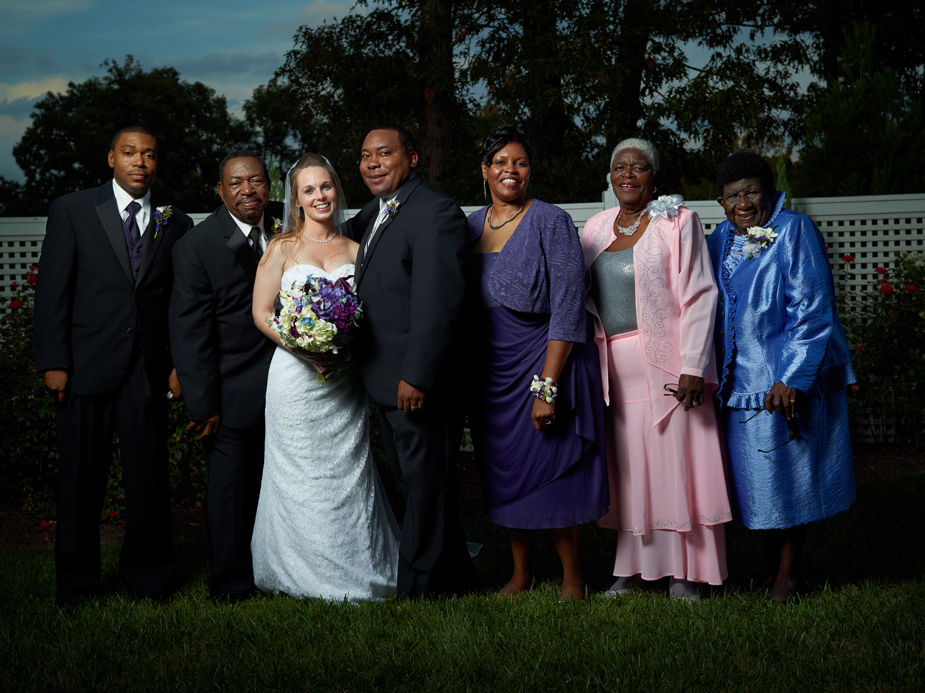
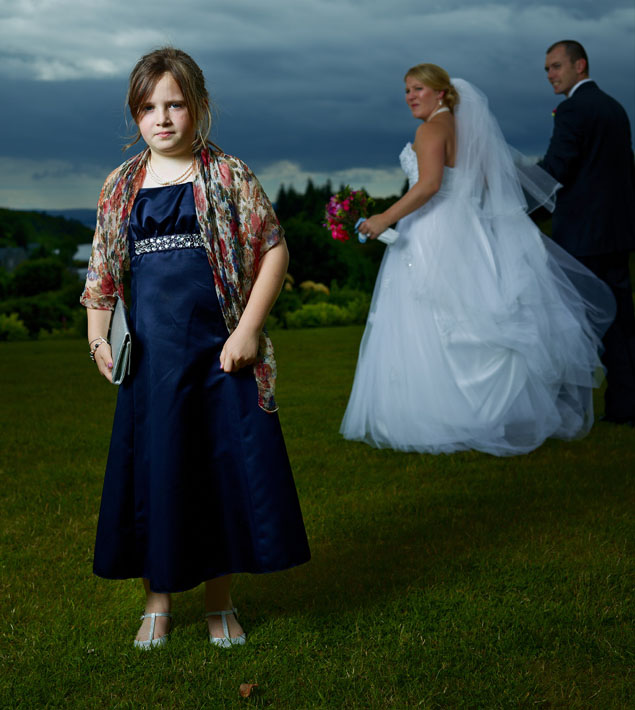
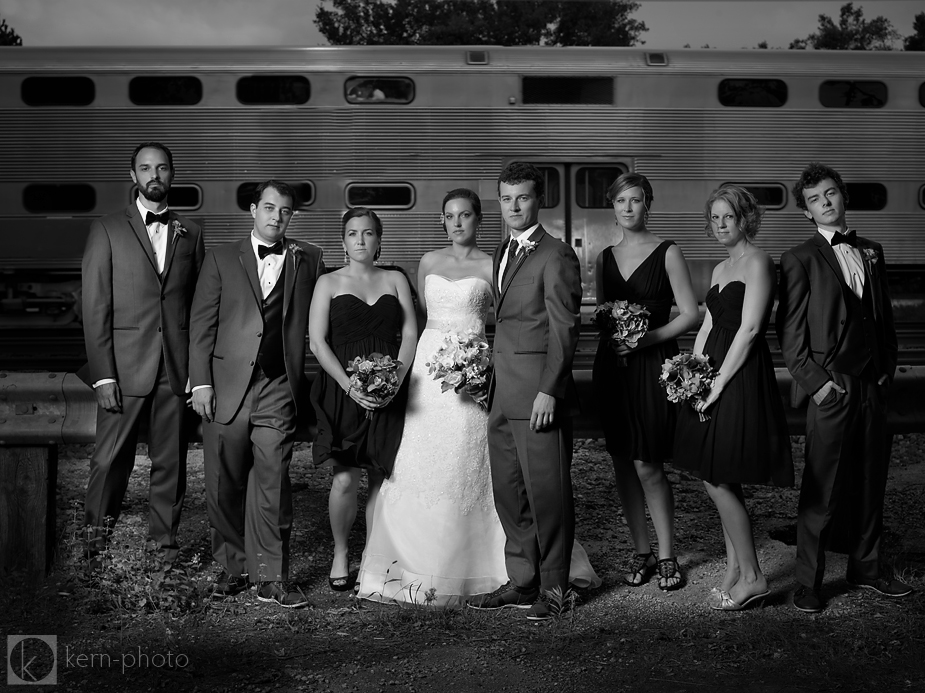
#6. Dig the Aspect Ratio. I dig the vertical 4×3 aspect ratio for portraits, far better than the 2×3 from a DSLR which I find is too skinny. I find I do not have to crop nearly as much from an image for my wedding albums, which allows me greater flexibility and ensures I don’t waste pixels in cropping. And for 16×20 print competitions, there’s no better aspect format. If I choose to crop, the technical merits of shooting digital medium format will work to my favor.
#7. Touch the Screen, Please! I love the tactile navigation, one step closer to touching an actual print. Most have never seen such a marvel. Using the retina-style display of the IQ 140 is like replacing the screen on the back of your camera with the functionality of an iPhone screen. It’s that cool. It’s a great talking point and a feature no other DSLR has. Flipping through images on the high resolution display impresses clients. It’s camera porn for those that like to chimp. Yet I can still access the functionality wearing gloves and using the buttons instead (good for icy cold mornings).
#8. Embrace Smarter Technology. The focus and exposure mask features are powerful and very useful, especially when shooting portraits in a short amount of time. Confirming critical focus, stat, is super important especially with shallow depth of field of medium format. A double tap on the screen allows me to confirm focus on this portrait of my brother, Sean, doing his “Blue Steel” pose.
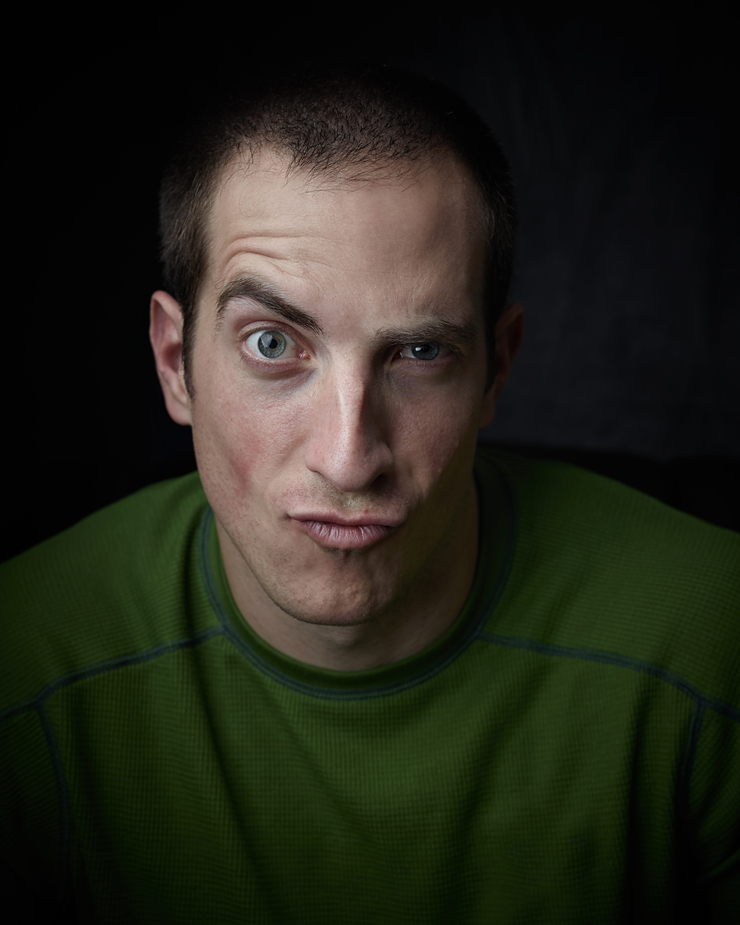
#9. Don’t Forget Old School Lenses. You have lots to choose from: Hasselblad, Mamiya, Zeiss, etc. After lots of research, I found the leaf shutter lenses from Schneider-Kreuznach (especially the 55mm) to be stellar. I am not tied to one particular camera manufacturer, but can choose from lenses and camera bodies that have been around for decades. Below, the fastest medium format lens available, the Mamiya 80mm f/1.9 is shot wide open at 1/400 sec, ISO 50 in open shade. My friend Tim Ho (pictured left) isn’t fond of the chromatic aberration of the 80mm f/1.9 wide open):
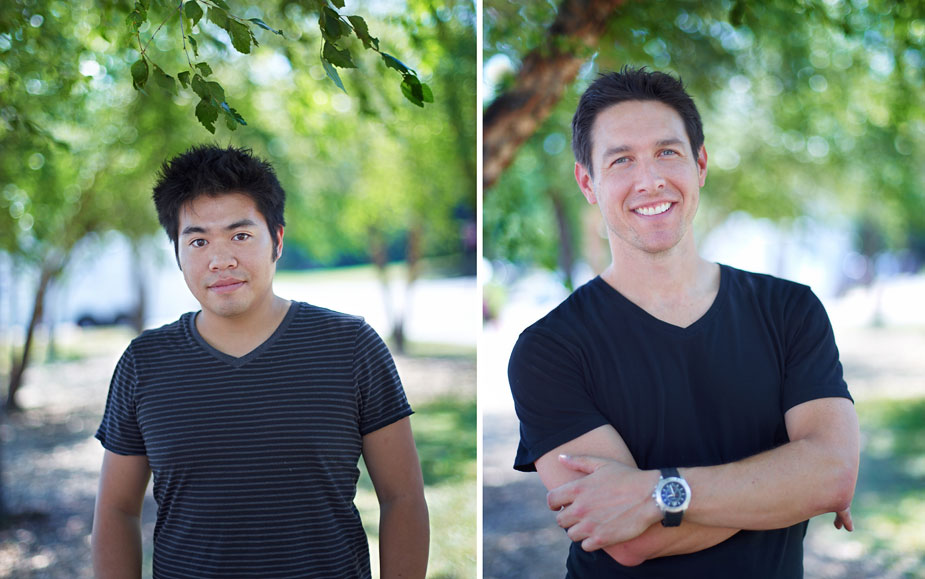
PhaseOne 645 DF / Mamiya 80mm f/1.9 @ 1.9 and 1/400 sec / ISO 50
The same Mamiya 80mm f/1.9 mounted on a Mamiya 645 AF film camera creates a slightly different look due to the film emulsion (image shot on film):
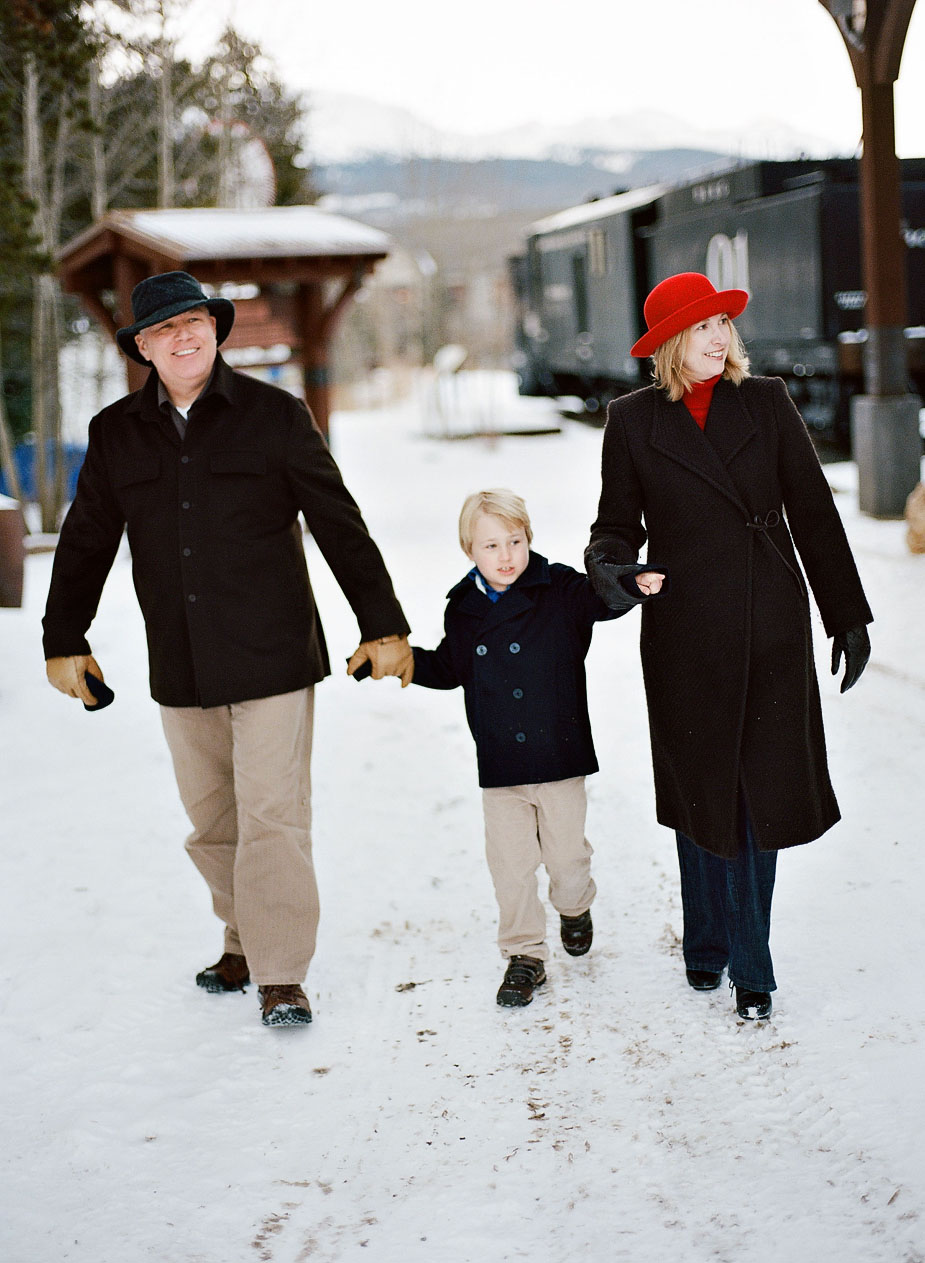
Mamiya 645 AF / 80mm f/1.9 / Kodak Portra 400 / RPL Scan
#10. Shallow Depth of Field. If you thought shooting 1.4 on a DSLR was shallow, wait until you try shooting f/2.8 on a medium format rig. Noticed how the depth of field in this portrait of my dog, Willy, draws your eye inward. There’s a ton of math needed to determine depth of field in relation to sensor size, distance to subject, focal length, yada yada yada I won’t go into in great detail, but it is a much shallower depth of field from my experience than what I’ve been used to using for the last decade.
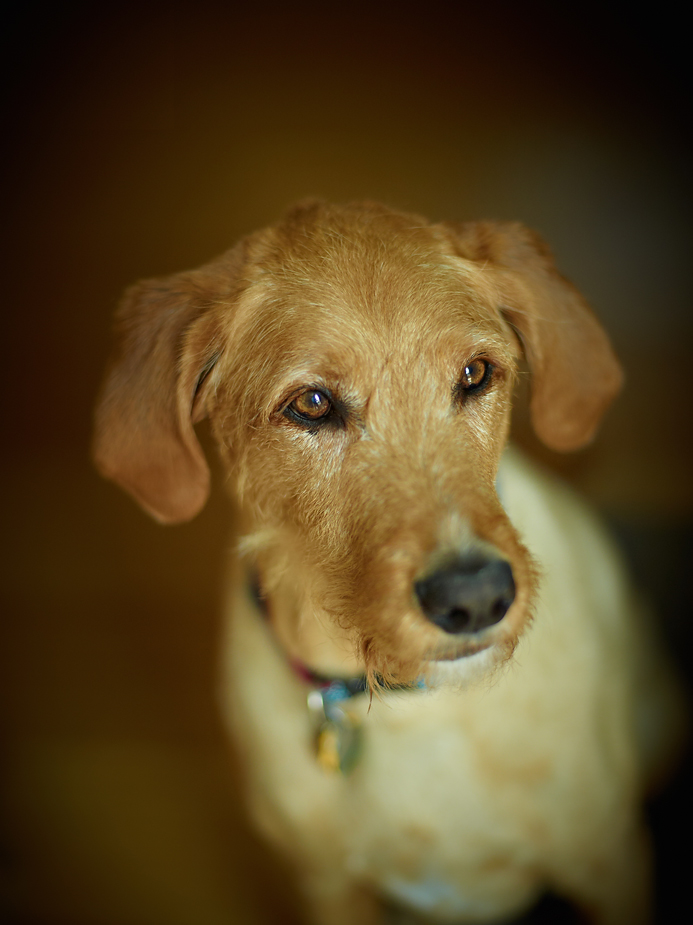
PhaseOne 645 DF / Mamiya 80mm @ 1.9 and 1/200 sec / ISO 50
#11. Optimal ISO. With my PhaseOne IQ, there’s a lower base ISO of 50 vs. 100 which means I can get 1 stop more flash power than the closest a DSLR. This gives me more options to use shallower depth-of-field, without the need for ND grad filters to slow autofocus. But I am not stuck there. Shooting at ISO 400 still looks amazing! And with Sensor+ technology, I can shoot up to ISO 3200 sensitivity and get a beautiful film-like grain, especially when converted to black and white. Plus, those images are smaller in size and speeds up my post-production workflow which is especially nice when I am editing reception photos.
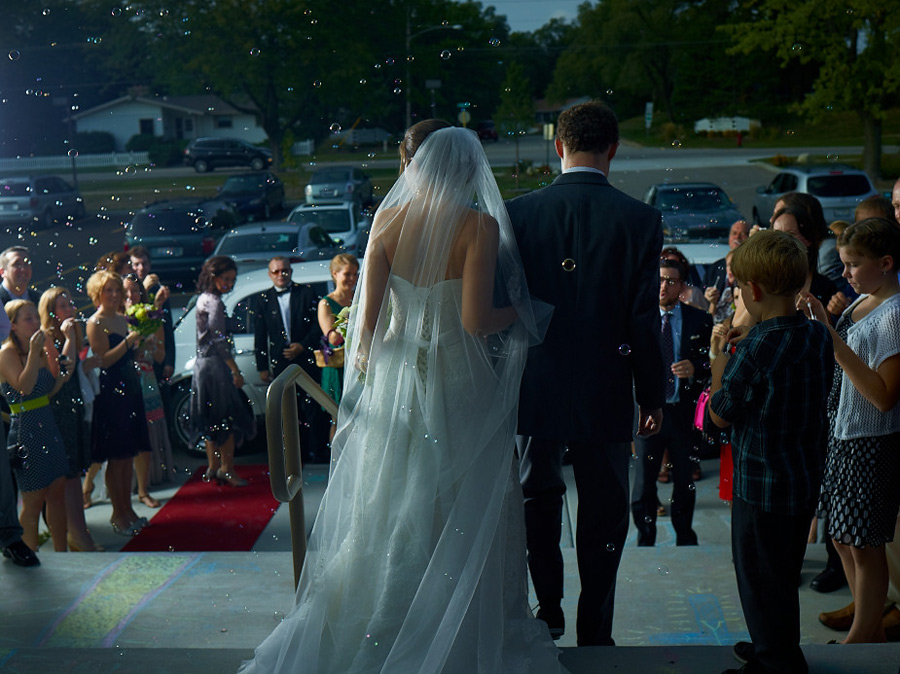
Over the next few months, I will share more tricks and tips to you that will encourage you to “think different” about elevating your business to the next level and making work your clients will not only rave about, but you’ll also enjoy creating.
Stay tuned to read part two of this series next week :: Business advantages of Medium Format vs DSLR.
To find out about more resources I share with photographers, click here!






Pingback: Business advantages of Medium Format vs DSLR » Kern-Photo - Kern-Photo
Pingback: Cat & Tim's Album » Kern-Photo - Kern-Photo
Pingback: Christine & Owen {Boulder, CO} » Kern-Photo - Kern-Photo
Pingback: Model Shoot w/ Lindsey » Kern-Photo - Kern-Photo
Pingback: The Hit List: 12 Top Posts from 2013 » Kern-Photo - Kern-Photo
Pingback: Going Pro pt 7: Choose Effective Mentors » Kern-Photo - Kern-Photo